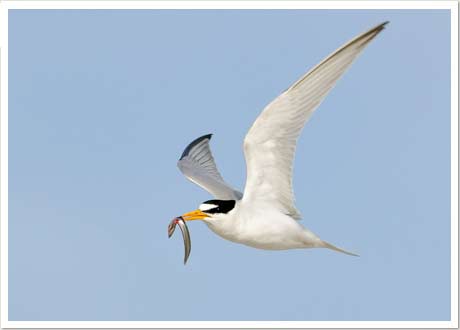|
 |
 |
 |
 |
| Sandy beaches are dynamic systems, constantly reshaped by shifting sands from wind, ocean waves and currents. Shorebirds that breed in this habitat lay their eggs in shallow scrapes in the sand, and forage for food in beach wrack. During winter months, sandy beaches frequently become cobble shores. |
 |
 |
|
 |
 |
|
|
 |
 |
 |
 |
 |
 |
 |
|
| Least Tern |
PHOTO: 1 2 3 |
 |
|
 |
 |
| Least Terns breed on Plymouth Beach from May until August. They lay eggs directly on the sandy beach and raise chicks that are flightless for several weeks. Least Terns defend nests and chicks by dive-bombing threats such as gulls, foxes, pets and people. Adult Least Terns feed themselves and their chicks on fish caught by diving into shallow water. You can find Least Terns throughout the beach and its coastal waters, but they are especially abundant on the ocean beach between the crossover and beach tip. |
|
|
|
|
|
|